1/48 Hasegawa “Year of the Cat” F6F-3K Drone
Hello again all. This is the last of the four Hellcats I was building at the same time for the "Year of the Cat" Group Build. I finished this one up a few nights ago, and photographed it last night.
I wanted to build some Hellcats with marking that you normally do not see. I also wanted something very colorful. This one fit the bill nicely.
After the War, some Hellcats were converted into flying Drones. They were remotely controlled by persons flying in other planes nearby. As the project progressed, the technology advanced to where these planes could be flown from remote ground stations, much like the Drones we know of today.
The brightly colored Hellcats had different colored tails to indicate different flying frequencies, similar to how RC planes were done several years ago with frequency tags attached to the antennae of the radio transmitter.
So in essence, we owe a lot to the advances made by the engineers that worked out the bugs with this project of a remotely controlled flying plane.
These planes were actually flown through the radioactive clouds from the Atomic Explosions during Operation Cross Roads. They gathered air samples to measure the radiation levels in the atmosphere.
Later on during the Korean War, radio controlled Hellcat Drones were used as flying bombs and deliberately flown into bridges, and occasionally rail road marshalling yards in an effort to disrupt the supply columns of Communist North Korea and China. On occasion they were successful and managed to score several direct hits.
I was lucky and found another great picture in my Squadron Signal book "F6F In Action" written by fellow Imodeller (and friend) Jim Sullivan. In Jim's excellent book, he had this picture which shows "Number 7" flying in formation with two other control Hellcats. This picture showed me some details I had not noticed before on exactly how the wing walk areas were painted.
George Henderson provided a very cool original color photo showing me exactly how the cruciform tail antennae was installed on these planes. He also gave me a little heads up about how the decals I had planned on using were for the early dash 3 variants with the small fuselage side windows just behind the main sliding canopy. The earlier dash 3 Hellcats also had a different shaped windscreen from the later dash 3 and 5's. (The decal sheets stated the drones were all the later dash 5 variant.) Surprise surprise... They were all not. It pays to check your references... and to have good friends point you in the right direction.
I tried to replicate this look with my build... This "cruciform" tail antennae had to be the hardest part of the entire project. No matter what I tried, the tension from the antennae cables always managed to pull the cruciform section a little out of square. I finally settled with what you see here.
So armed with all of this various bits of information, I sat out to build a fairly correct and authentic looking Hellcat Drone.
One other modification done to these drones on a regular basis was the extension of the tail wheel strut. This made it easier for the drone controller to see where the plane was headed on takeoff, since the Hellcat was a "tail dragger" and sat a little nose high when parked.
You can check out the build log by following this link here:
http://imodeler.com/groups/year-of-the-cat/forum/topic/3-hasegawa-f6f-hellcats-1-daytona-nas-1944-45-2-blue-angels-bird-3-target-tow-or-drone/
This one was build using Model Master enamels. Other than the obvious additions of the cruciform tail antennae and the lengthened tail wheel strut, the only other change was adding a vacuum formed canopy.
This was done out of necessity, since I managed to fog the original kit part horribly during the painting process. Luckily the replacement allowed me to pose the canopy in the open position. This is something that is very hard to do, (if not impossible) using the kit supplied parts.
Special thanks go to Jim Sullivan, George Henderson and Dan DeSilva for providing me the needed detail photos and guidance along the way. Thanks Guys !
I also want to take the time to thank all of you who have commented and provided the encouragement along the way, during this lengthy build journal.
So now on to the plane... Here she is... the Pratt and Whitney is getting ready to fire up. All that's missing is the belching blue / whitish colored smoke and noise...which I consider to be music to our ears. If you ever get the chance to watch a real life radial engine fire up, go for it. You don't know what you are missing.
Enjoy... and as always,
Comments are encouraged.
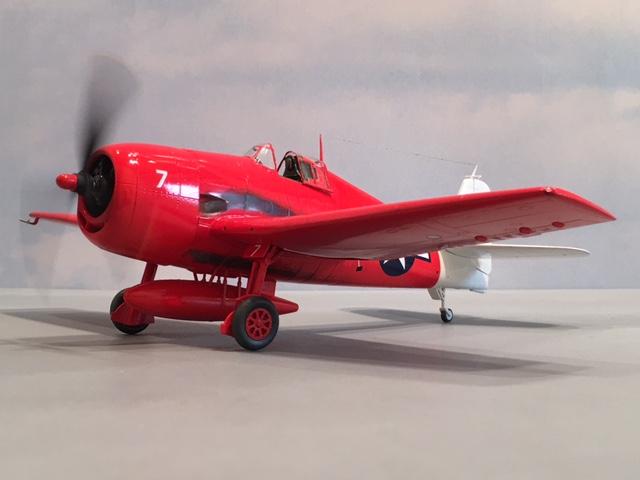
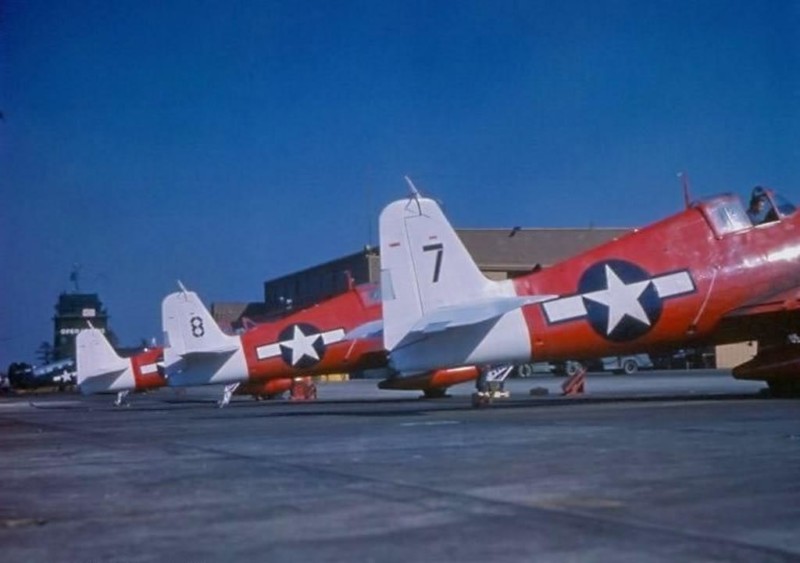
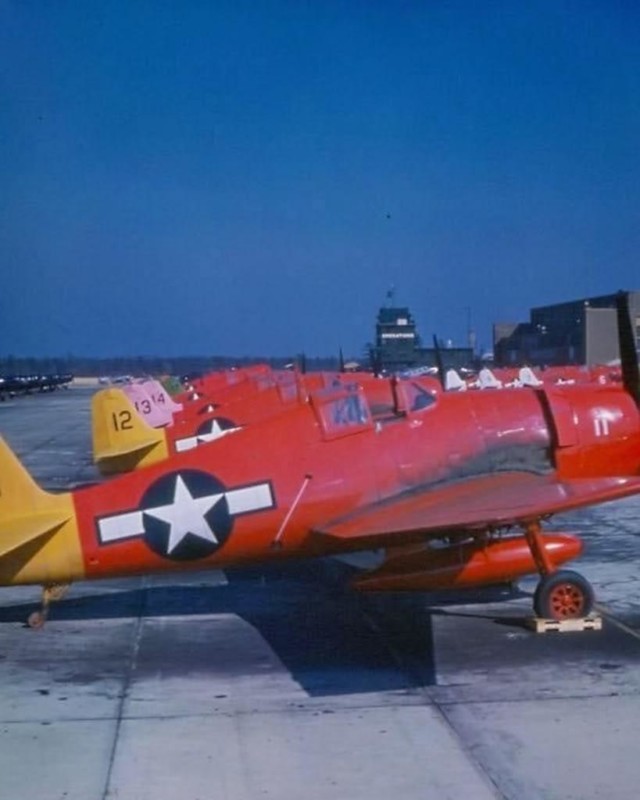
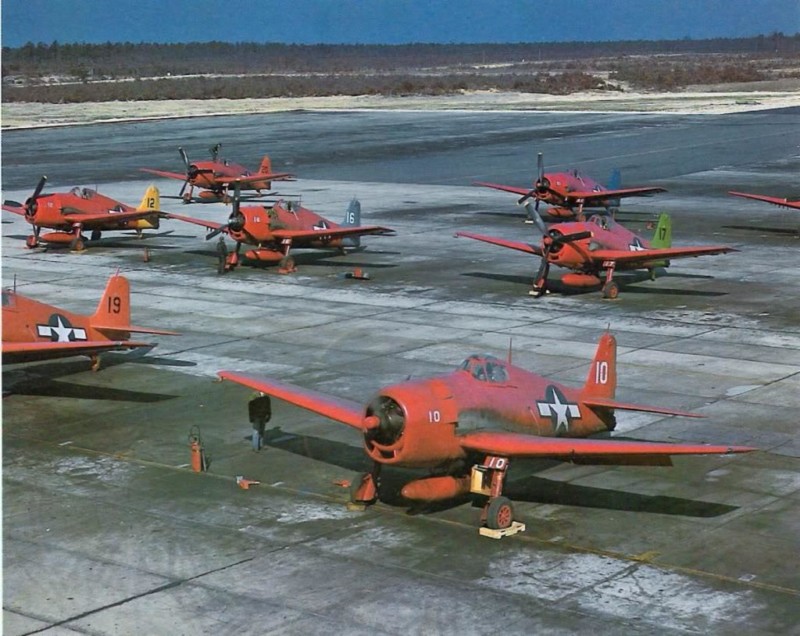
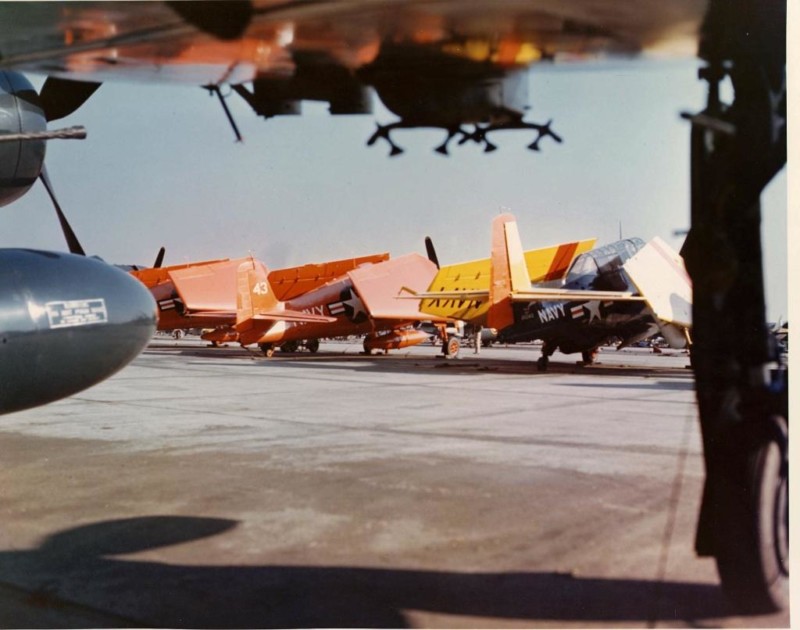
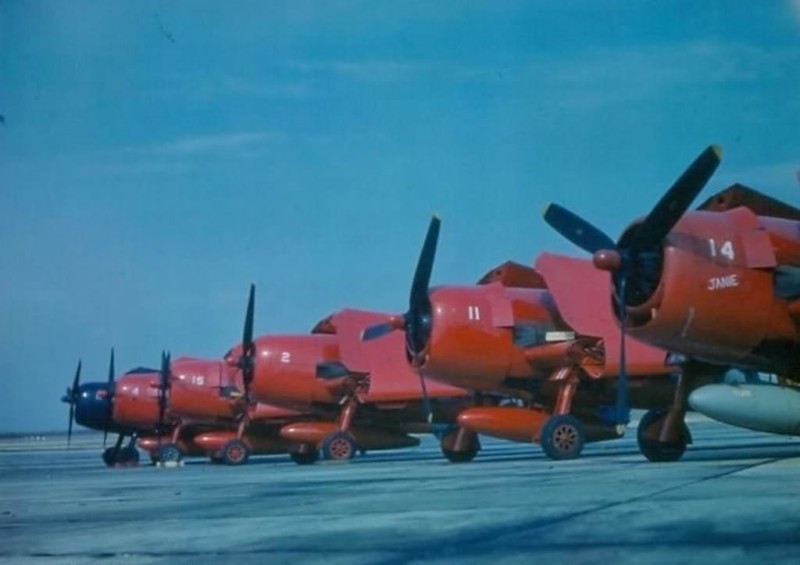
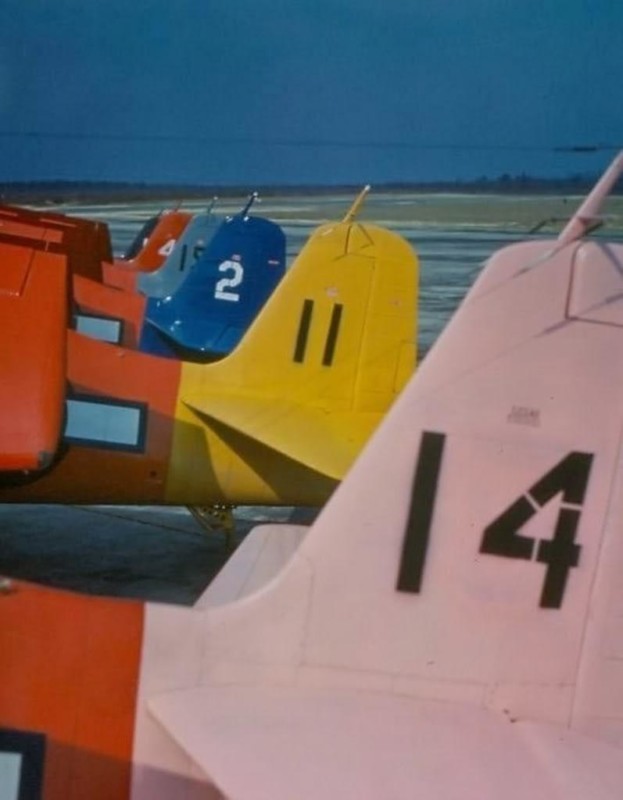
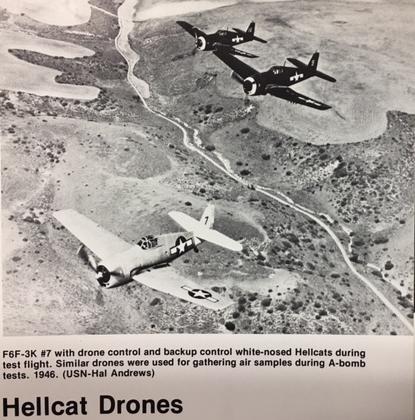


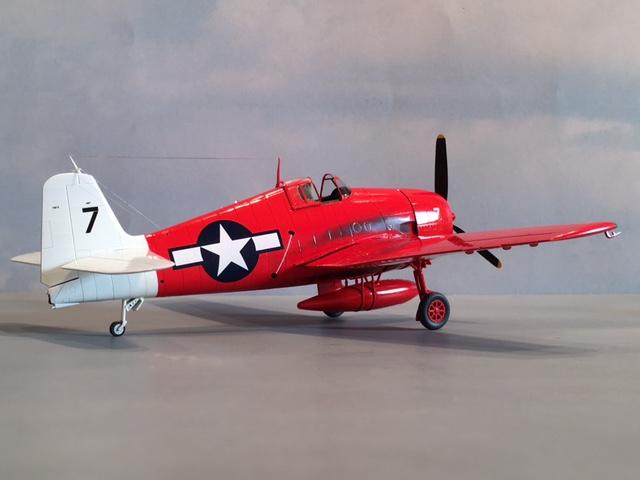

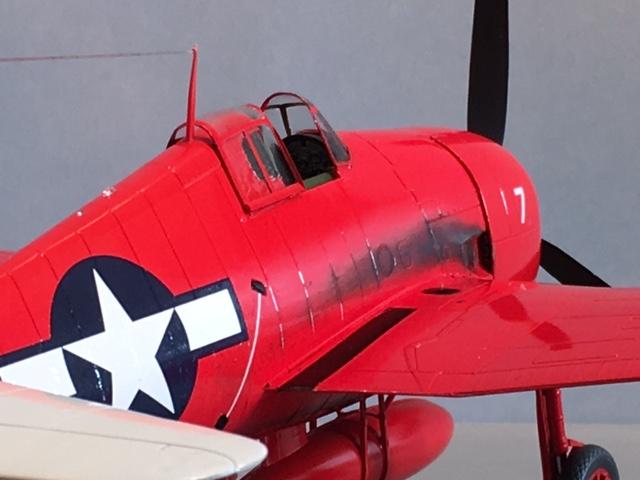
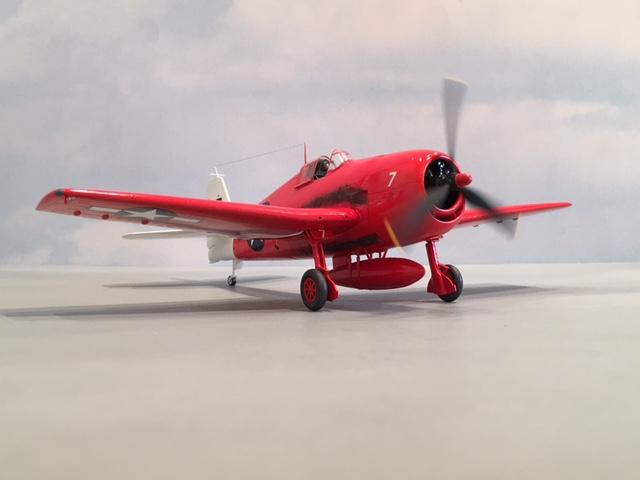
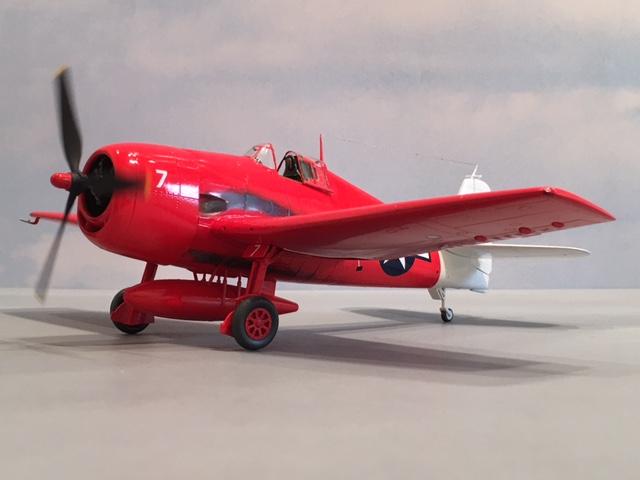
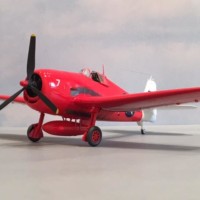
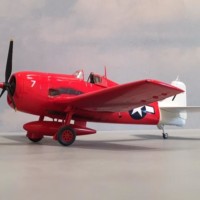
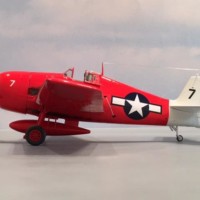
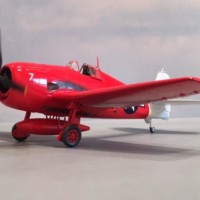

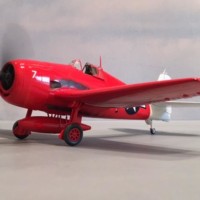
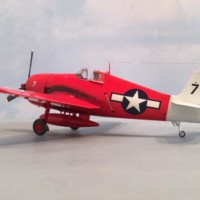
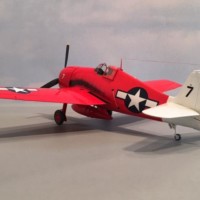
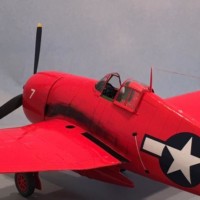
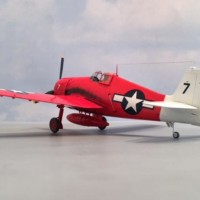
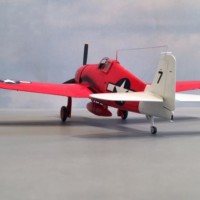
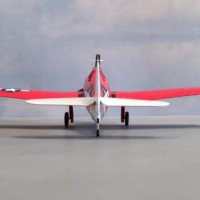
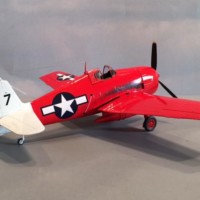
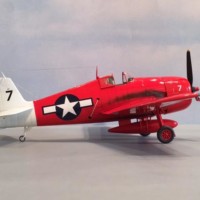
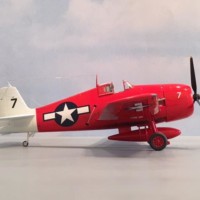
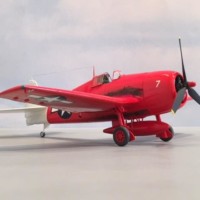
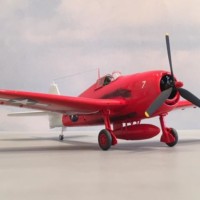

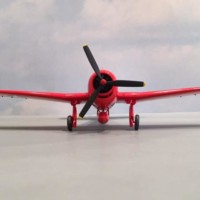
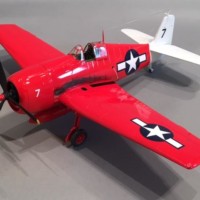
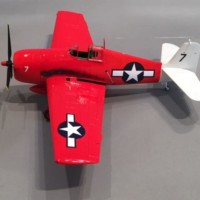
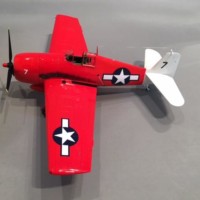
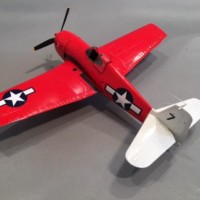
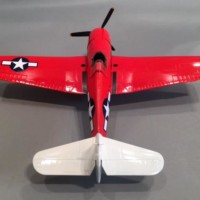
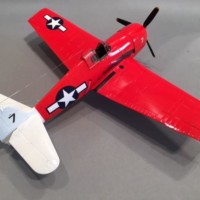
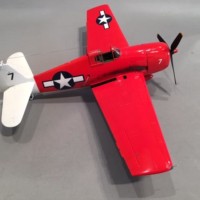
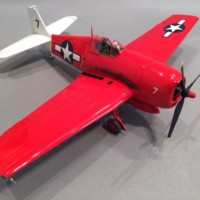
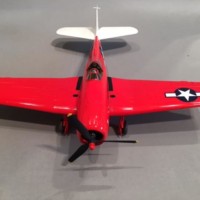

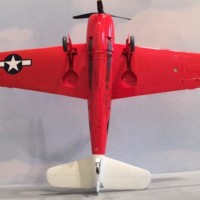
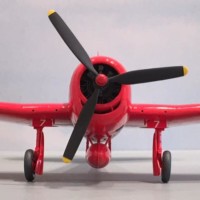
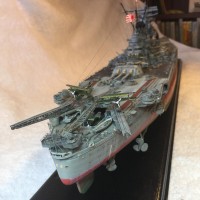
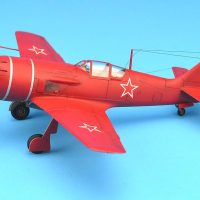
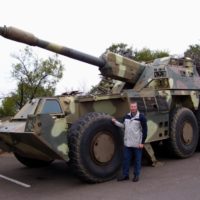

Fine lookin' Hellcat, Louis! That's a real beauty and those are striking paint jobs! I've been following since your first post and this has been really interesting.
Great photos too, my friend.
Someone's gonna be in some serious trouble if these pictures show up at the wrong place ... several pictures show the engine running with no pilot in the seat! That's a serious violation of Military safety rules, as you well know!
Great 'Cat, Bud!
Thanks Buddy !
Good eyes ... I wanted to draw attention to this, since a pilot was not always needed in these drones. I'm sure it drew attention when they saw a brightly colored Hellcat plane taxiing by with no one behind the controls.
Much like the P-59 test pilot wearing a gorilla suit mask !
That was choice! My Dad said that the first thing he thought when he saw the P-59 he flew was "Where the Hell is the prop?!" Probably a VERY common thought or question back then!
Talk about the ULTIMATE Rc plane - these 'Cats (as well as others since then) provide a valuable service. But it sure makes me sad to see these beauties "going to waste," so to speak. Especially now, 60+ years later when these old beasts are few & far between ... and terribly expensive to buy - own - operate. SUCH a shame.
Sigh ...
Well, I hate to drone on about the Hellcat being a radio controlled plane...so a pilot not being in the plane is OK. As long as there is another pilot in another Hellcat controlling the drone.
It is my understanding that some of the surviving war birds where former drones that managed to survive the ravages of testing. Just as a lot of F-86's that are still flying were drones that managed not to get shot out of the sky.
Louis, I noticed that you captured the tail wheel being extended rather well. I wonder if the Navy did this to help elevate the a/c's angle of attack for taking off better. It would be easier to maintain the aircraft too with the tail wheel not moving as much.
Weren't Hellcats or TBM's used as drones during the Korean War? They where filled up with explosives and driven into enemy emplacements.
Keep up the good work Louis.
Yes Stephen you are correct about some of these surviving, although I don't think it was too many.
Later on as technology advanced, I have read where they controlled these planes from the ground too, just like the modern day counterpart is.
They modified the tail wheel strut to get a better viewing angle for the TV camera. This way the controller could better see what was ahead of the plane while it was on the ground. By raising the tail wheel, they lowered the nose of the plane, which provided a much better forward view.
Yes the Hellcats were used as explosive drones and flown into targets during the Korean War. I believe the explosives were carried under the fuselage centerline in the form of a 2,000 pound bomb. They were used to hit the supports for bridges. By damaging the supports, they could knock a bridge down.
Louis , where were the camera's mounted?
I'm not 100 percent sure... Could have been where the gun sight originally was, or even where the original gun camera was located in the leading edge of the wing. In some pictures you can see a small pod mounted under the wing. It's possible this may have housed the camera too.
Good question... Maybe someone else will know ? and can post the answer ?
Stephen, that drone pun is not even remotely funny.
Good one David ... Love it. You guys crack me up. 🙂
The "Pun" is the lowest joke you can make. I supposed I'm grounded now.
That's it... Your grounded. Now we will stamp your GI issued meal card "No Desert" and bend your dog tags... 🙂
a little military humor. 🙂
Stephen, with jokes like this we can all pick up our DD214's
Its Double D's or nothing. One of my honey do's was to install a toilet for the Mrs. and its been down hill all day. I did get some time to work on a Hasegawa Tojo...you guy's kept me above water.
David, well played, Sir!
Good luck on your plumbing adventure. I always wanted longer arms during my efforts. I thought if orangutans or octopi could be trained to do plumbing, money could be made.
Thanks for the history bite, Louis. I really like the way you intertwine the model, the history, and the build. You and Tom C are masters of that art and I really appreciate the time and effort you both put into sharing your passion with us.
David my friend... I'm glad that you enjoyed this. I also thank you for "liking" the article too.
I try to teach a little history lesson with each build I post, but I'm not in the same league as Tom C.
It is my passion though... and I thank you again for the kind words.
Another fine Hellcat, Louis! nicely done!
Thanks Robert. I appreciate the compliments my friend.
And the hits jus' keep on comin', my friend...outstanding presentation..!
Thanks buddy for the kind words and for "liking" the article too. I'm glad you enjoyed it my friend.
Louis, it's a beaut! and the red just makes it POP!
Thanks Bernard ! and thanks for "liking" the article too...
Fantastic colour scheme on this drone and, again, I’ve really enjoyed reading your post and the comments that followed. Now the Ironworks can take a well earned rest before the Chinese New Year celebrations start next month.
Thanks George for the compliments. I think that the Iron Works is going to take a little break from building. Yesterday was an official day off and I didn't do anything but some reading.
Thanks for "liking" the article too my friend.
Striking work, as usual, Louis, and a remarkable history lesson to boot.
Ya larn suthin' new ever' day!
Thanks David. I try to include a little history with each of my postings. Thanks again buddy.
Louis, always fun to see something different and learn a little history, very nice build, (for some reason I like that pink tail version as my personal favorite,). Well done !
Thanks Terry. I sincerely appreciate the compliments. It was a very hard decision to make on which color to choose. Eventually I decided that I would build it with the white tail since the model already was painted in white as a base color. The white tail version was a great color contrast with the red / orange. I still have a lot of numbers left over from the decal sheet so I may end up building a few more of these drones in the future. I'm definitely going to be building up one from "Point Mugu". I have an old Danger Boy resin wing fold set and there are some cool looking color pictures showing these planes parked with the wings folded. That is probably how I would build the next drone model.
Thanks again buddy.
Well done Louis, the history behind the colorful Cats was quite informative. And your choice of the white tail version really pops. Job well done buddy, you're good to go.
Thanks Tom. I'm glad I built it with the white tail now that it is done. I think that it's a great color contrast. Glad you enjoyed this one bud. Take care my friend.
Now that one is a real eye-catcher! Love the model, and the history behind it. Excellent post.
Thanks Greg for the kind words. I really like to include some history behind the build. It's even better when I can include pictures of the real subject. I was very fortunate this time. Thanks again my friend.
Great cat, bright color, I like it! Kudos Louis!
Thanks Michel. Glad you liked it.
Louis, about the cameras- I've seen photos of some of these with pods on the wingtips, Maybe that's where? Not much out thre on postwar (or wartime) drones Might still be classified. If you've ever worked in security, they put the fear of God into one.
That is a possibility Bernard. It never entered my mind about it possibly being classified. Who knows ? Good points. Thanks
What a way to cap off this series of builds! Fantastic work again, Louis! I especially like how you replicated the unusual antenna wire modification to your drone. Well done, /Sir!
Thanks Drew ! I appreciate the kind words my friend. The drone antennae wire on the tail had to be the hardest part of the build...
Sorry for the late post. That...my friend...is one awesome looking Hellcat
No worries George. Thanks for the compliments my friend.